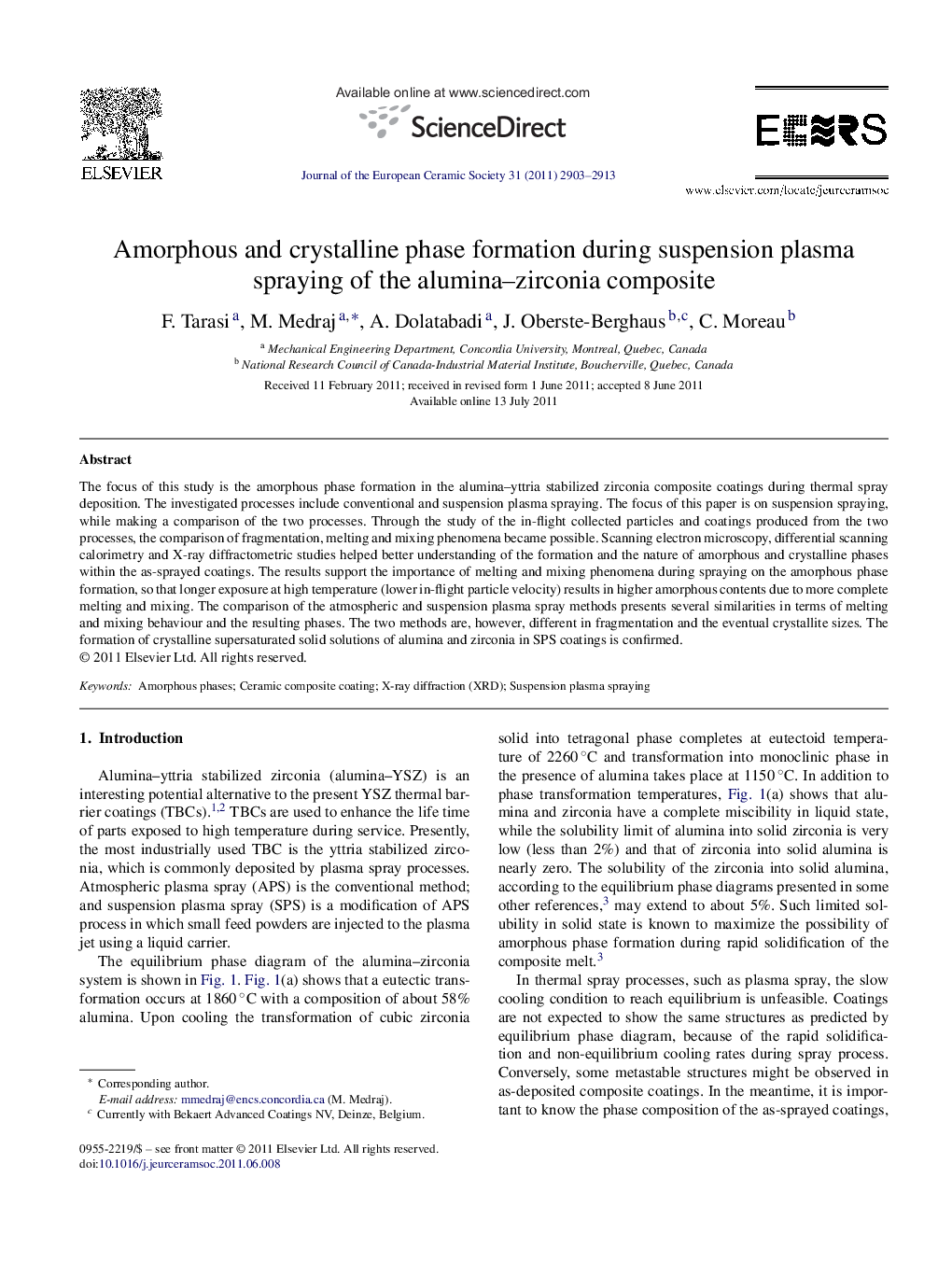| Article ID | Journal | Published Year | Pages | File Type |
|---|---|---|---|---|
| 1474222 | Journal of the European Ceramic Society | 2011 | 11 Pages |
The focus of this study is the amorphous phase formation in the alumina–yttria stabilized zirconia composite coatings during thermal spray deposition. The investigated processes include conventional and suspension plasma spraying. The focus of this paper is on suspension spraying, while making a comparison of the two processes. Through the study of the in-flight collected particles and coatings produced from the two processes, the comparison of fragmentation, melting and mixing phenomena became possible. Scanning electron microscopy, differential scanning calorimetry and X-ray diffractometric studies helped better understanding of the formation and the nature of amorphous and crystalline phases within the as-sprayed coatings. The results support the importance of melting and mixing phenomena during spraying on the amorphous phase formation, so that longer exposure at high temperature (lower in-flight particle velocity) results in higher amorphous contents due to more complete melting and mixing. The comparison of the atmospheric and suspension plasma spray methods presents several similarities in terms of melting and mixing behaviour and the resulting phases. The two methods are, however, different in fragmentation and the eventual crystallite sizes. The formation of crystalline supersaturated solid solutions of alumina and zirconia in SPS coatings is confirmed.
